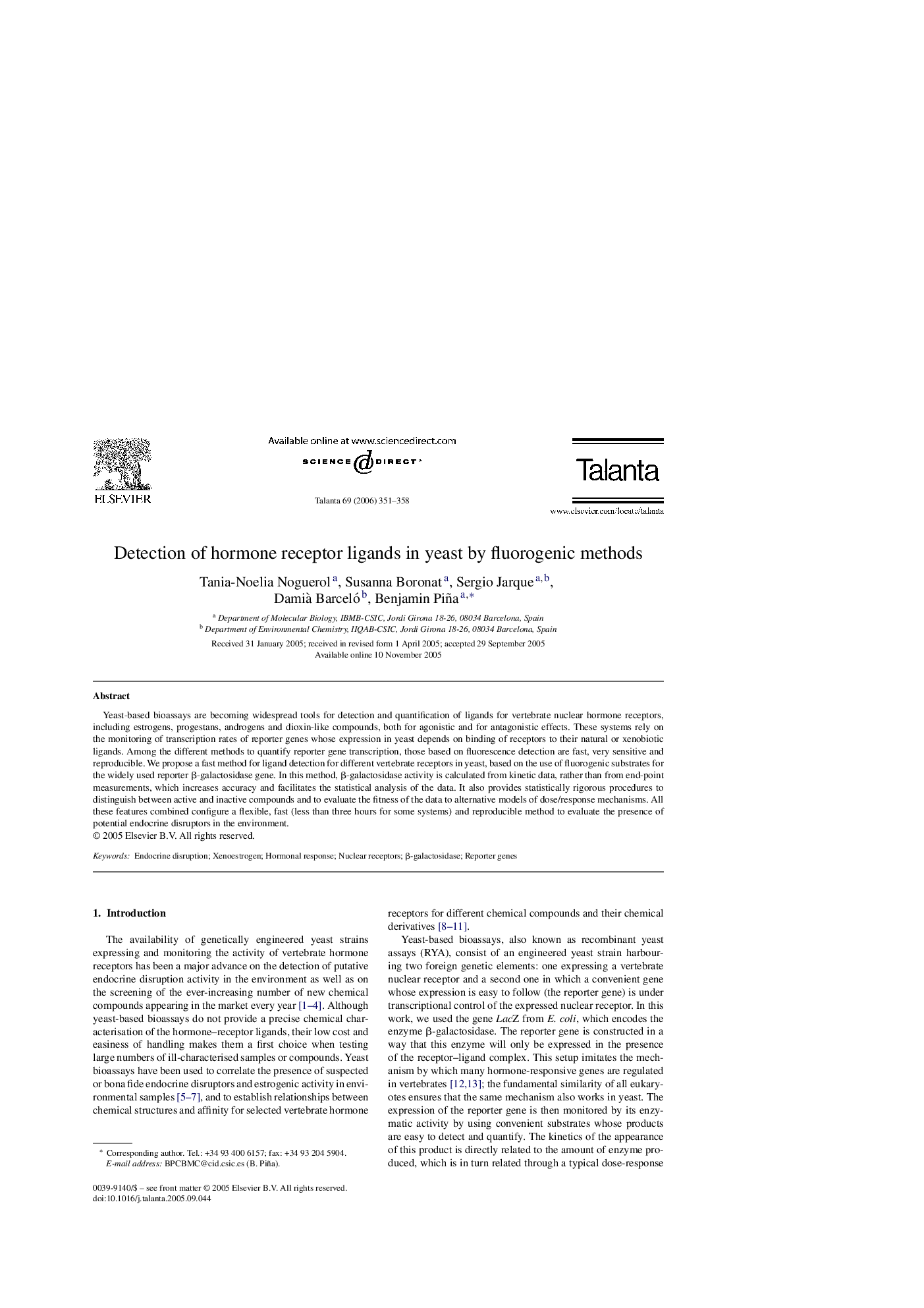| Article ID | Journal | Published Year | Pages | File Type |
|---|---|---|---|---|
| 1247325 | Talanta | 2006 | 8 Pages |
Yeast-based bioassays are becoming widespread tools for detection and quantification of ligands for vertebrate nuclear hormone receptors, including estrogens, progestans, androgens and dioxin-like compounds, both for agonistic and for antagonistic effects. These systems rely on the monitoring of transcription rates of reporter genes whose expression in yeast depends on binding of receptors to their natural or xenobiotic ligands. Among the different methods to quantify reporter gene transcription, those based on fluorescence detection are fast, very sensitive and reproducible. We propose a fast method for ligand detection for different vertebrate receptors in yeast, based on the use of fluorogenic substrates for the widely used reporter β-galactosidase gene. In this method, β-galactosidase activity is calculated from kinetic data, rather than from end-point measurements, which increases accuracy and facilitates the statistical analysis of the data. It also provides statistically rigorous procedures to distinguish between active and inactive compounds and to evaluate the fitness of the data to alternative models of dose/response mechanisms. All these features combined configure a flexible, fast (less than three hours for some systems) and reproducible method to evaluate the presence of potential endocrine disruptors in the environment.
